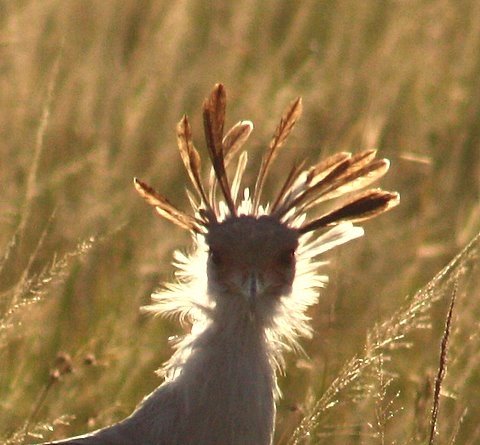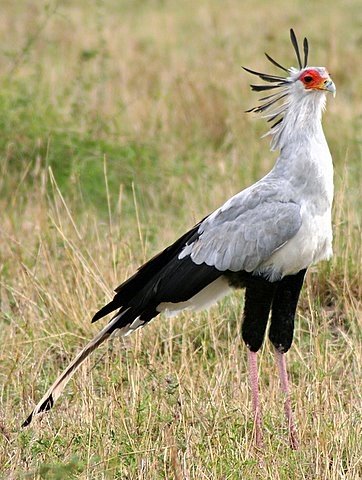|
Author: Kate I hope you’re having a better hair day than this guy! This crazy-looking fellow, which stands over 3 ft high, is a secretary bird. I think it looks like it should be hanging out with dragons and unicorns in a mystical world rather than here on the African plains, but luckily, Mother Nature didn’t ask me. I’ve heard a few different versions of the origin of this bird’s name. First, the feathers sticking out of its head look like pens stuck behind a secretary’s ear. Along similar (albeit slightly more sexist) lines, I’ve also heard that - like a secretary – the bird has nice legs. The third explanation for the name is less entertaining, but more historically accurate. It seems that "secretary" is actually derived from the Arabic word saqr-et-tair, meaning "hunter-bird." True to its title, this bird is a formidable predator, and is one of only two birds in the world that hunt exclusively on foot. These guys are especially skilled at hunting snakes. Their crazy crown of feathers is both a threat display and a distraction for angry serpents, and their legs have scales that act as armor against snakebites. In fact, in rural areas secretary birds are often taken as pets to keep the land snake-free…they’re an avian analog of barn cats.
Their hunting method is really fascinating to watch (but then again, I have a thing for peculiar predators). With those long, lovely legs, a secretary bird stamps the ground to flush potential victims out of their hiding places. Once the prey is in sight, they either stomp on it, rendering it unconscious - then eat it alive - or peck it to death with their strong, sharp beaks. And you thought hyenas were brutal!
0 Comments
Your comment will be posted after it is approved.
Leave a Reply. |
About
Notes From Kenya is a blog run by the students in the Holekamp Lab at Michigan State University, College of Natural Science, East Lansing, Michigan, U.S.A. Archives
July 2020
Categories |


 RSS Feed
RSS Feed